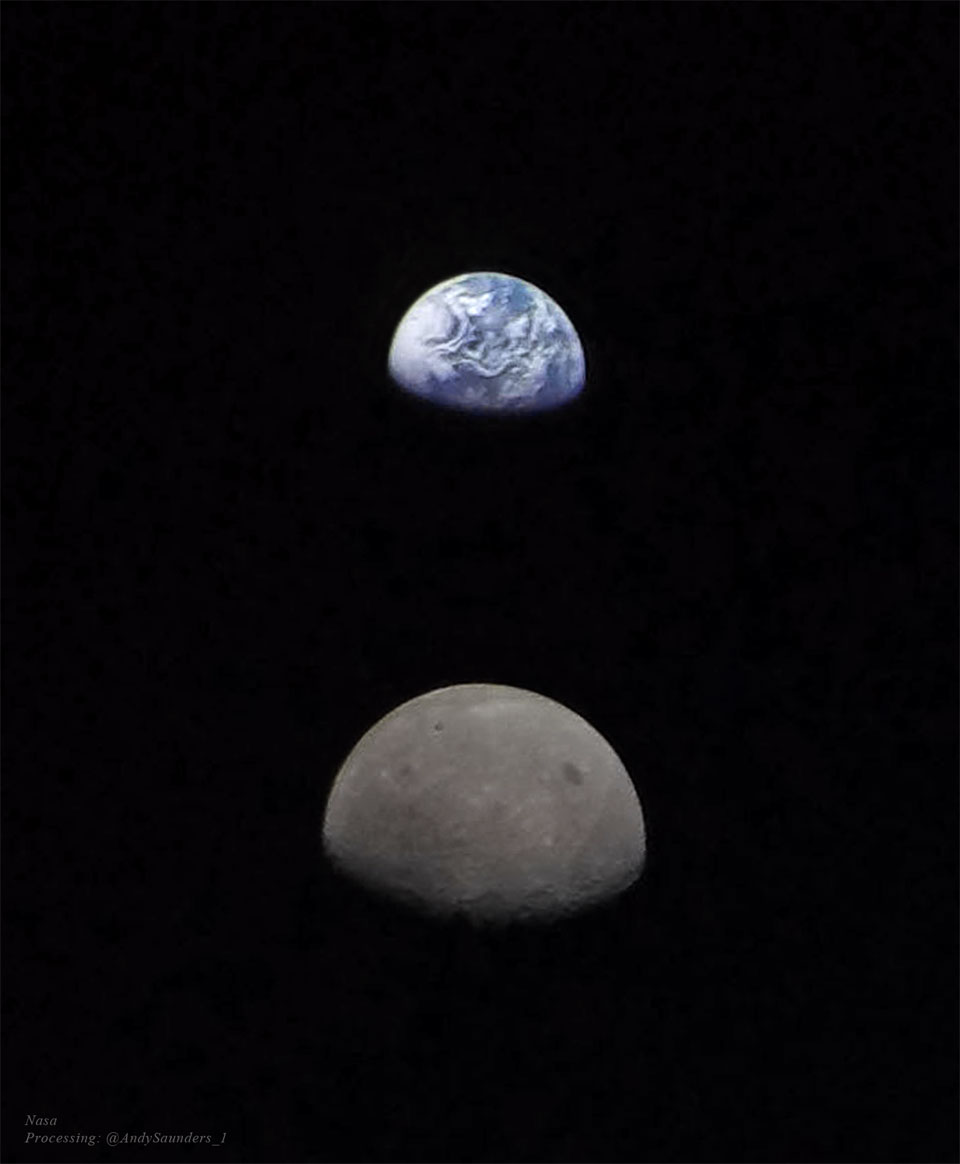2024年1月24日
Earth and Moon from Beyond
Image Credit: NASA, Artemis I; Processing: Andy Saunders
Explanation: What do the Earth and Moon look like from beyond the Moon? Although frequently photographed together, the familiar duo was captured with this unusual perspective in late 2022 by the robotic Orion spacecraft of NASA‘s Artemis I mission as it looped around Earth’s most massive satellite and looked back toward its home world. Since our Earth is about four times the diameter of the Moon, the satellite’s seemingly large size was caused by the capsule being closer to the smaller body. Artemis II, the next launch in NASA’s Artemis series, is currently scheduled to take people around the Moon in 2025, while Artemis III is planned to return humans to lunar surface in late 2026. Last week, JAXA‘s robotic SLIM spacecraft, launched from Japan, landed on the Moon and released two hopping rovers.
Explore Your Universe: Random APOD Generator
Tomorrow’s picture: sky map
远处所见的地球与月亮
影像提供: NASA, Artemis I; 影像处理: Andy Saunders
说明: 从月亮的后方看过来,地球和月亮会是何种样貌?虽然它们经常一起入镜,但是在2022年底,美国航空航天局阿尔忒弥斯1号任务的猎户号飞船,旋绕到这颗地球最大卫星的后方,然后回首眺望它的故乡地球,并拍下了这对天体的不寻常视角影像。由于地球的直径大约是月球直径的4倍,是以月亮看似较大,则是因为宇宙飞船较靠近它所致。阿尔忒弥斯2号是美国航空航天局阿尔忒弥斯计划的第二项任务,目前规划在2025年把人类送到月球附近,接续的阿尔忒弥斯3号任务,将于2026年底把人类送回月球表面。在上星期,来自日本JAXA(日本宇宙航空研究开发机构)的小型无人探测器SLIM降落在月球上,并布署了两部跳跃式的月面车。 (Artemis mission 阿尔忒弥斯任务)
探索你的宇宙: 随机APOD生成器
明日的图片: sky map



